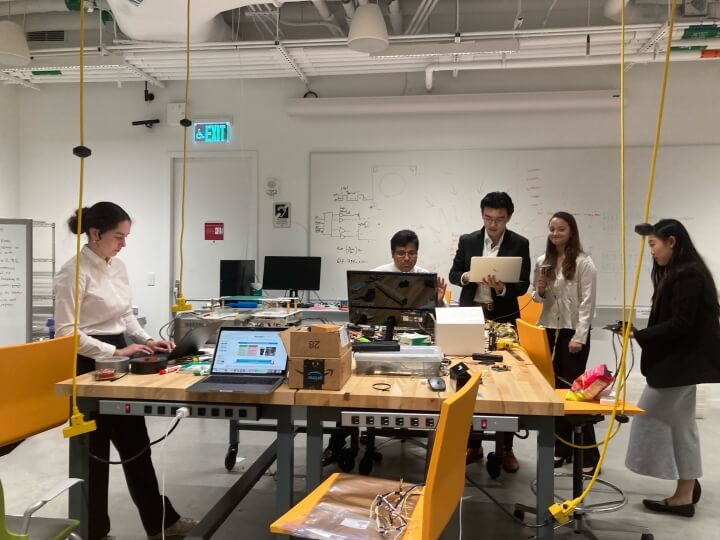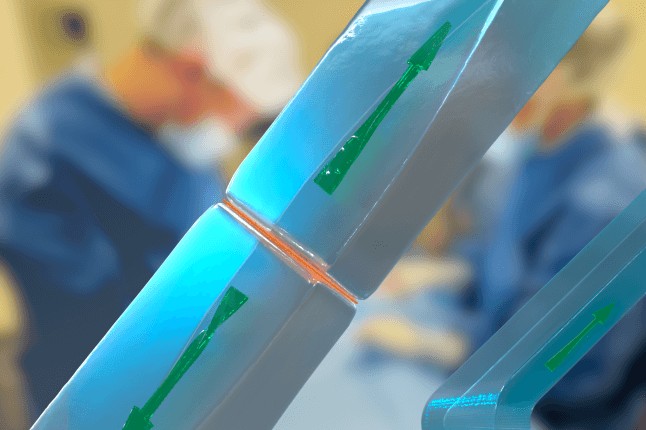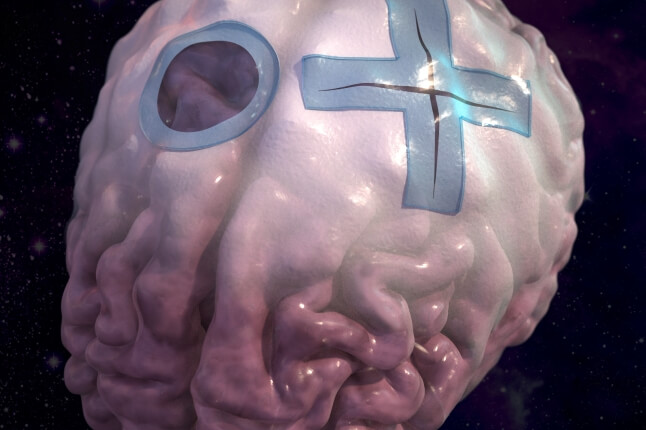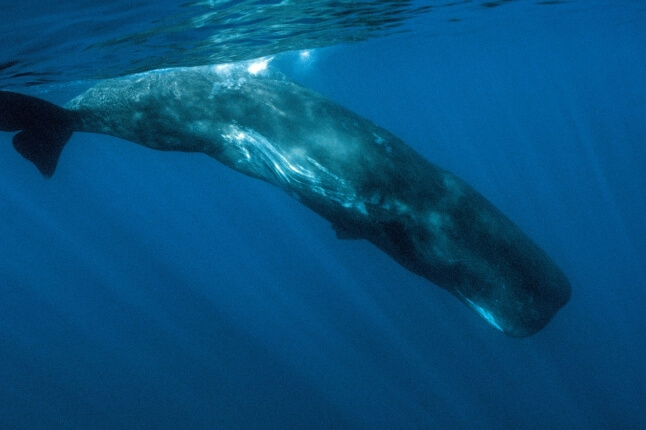News
SEAS students work on their design project for the Harvard Stem Cell Institute iPS Core Facility
Repetitive, manual tasks are an inevitability in managing daily operations in a research setting. But the more time researchers spend on basic maintenance, the less time they have to do cutting-edge research.
Third-year students at the Harvard John A. Paulson School of Engineering and Applied Sciences (SEAS) worked with the Harvard Stem Cell Institute iPS Core Facility last fall to design a pair of solutions to reduce the time spent on day-to-day operations. They created an automated task management and scheduling system called “WorkFlow,” and a semi-robotic cell imaging system called “CytoScope.” The students presented their designs as their final project for “ES96: Engineering Problem Solving and Design Project,” a core course for third-year SEAS students pursuing S.B. engineering degrees. This section was taught by David Mooney, Robert P. Pinkas Family Professor of Bioengineering.
“This was the best design project I’ve ever been part of,” said project co-lead Ryan Link, a mechanical engineering concentrator. “We started from scratch, didn’t know what we’d have at the end. It was this whole design process: start from literally a blank piece of paper, create each piece, go through and solve problems along the way, and build something in the end.”
The iPS Core Facility derives and distributes induced pluripotent stem cells (IPSCs). Unlike embryonic stem cells, IPSCs can be taken from adults and start off as cells that have already differentiated into a specific use, such as kidney or heart cells. The cells can then be regressed into stem cells, which can differentiate into a new function.
“I could walk up to an adult, take some cells, turn them into stem cells and use them to recreate their kidney or liver,” Link said.
Because IPSCs can be taken from adults, they have the potential to enable stem cell research without the ethical and political issues associated with embryonic stem cells.
“As bioengineers, a lot of the stuff that we research has ethical concerns in mind,” said Aaron Zheng, a bioengineering concentrator and project co-lead. “So, it was very interesting for us to work on this project to further a field that has a lot of scientific implications without the preexisting ethical implications.”
The iPS Core Facility challenged the 13 ES96 students to identify ways to improve productivity and operations in the lab. That led to a full month of background research and interviews to identify the most-pressing needs.
“We spent a month deriving a one-sentence problem statement, which is what we framed the rest of the semester around,” Zheng said. “It was about what our client needed the most, what their biggest challenges were, and what solution would best address that problem.”
The students then brainstormed potential solutions, slowly whittling down the list based on factors that included cost of materials, level of impact, and feasibility of delivery by the end of the semester.
“The students worked hard, demonstrated significant creativity and ingenuity, and I think really learned how to work as a team on a complex, multicomponent project,” Mooney said. “The Teaching Fellows, Shawn Kang and Kyle Ruark, and Active Learning Labs staff Melissa Hancock and Avery Normandin provided access to critical resources and important training, and the students worked closely with the iPS Core Facility Director Dr. Laurence Daheron to both identify the key issues and develop solutions.”
As a problem statement, the students decided the facility’s biggest need was to improve the inefficiencies in its monitoring technology and process of culturing sample cells. The CytoScope addresses those inefficiencies by automating the imaging process for stem cell plates stored overnight in incubators.
“When researchers would check on the IPSCs every morning, they’d have to take them out, put them under a microscope, examine them by hand and try to determine what was going on,” Link said. “They’d have to do that for every cell plate or cell well, which means a lot of manual labor for a pretty simple task. Our idea was to create a system inside the incubator that could image the cells autonomously overnight, and the researchers could just look at the images in the morning without having to do all these extra steps.”
WorkFlow is a software system that combines calendar, messaging, spreadsheet and task-management programs, making it easier for researchers to track what their colleagues are doing and when. Both final products stressed the importance of feasibility, of designing engineering solutions that can be delivered to a client by a specific date.
A lot of my classes have been about demonstrating proof-of-concept products, but never actually designing a functional project. This class, because we had to deliver it to a client, made us consider many factors beyond how innovative it would be.
Link added, “Designing for perfection wasn’t the option – it was designing to meet the task that we set out to achieve.”
Learning how to work in a large, diverse group is a critical skill for any engineer. ES96 projects are frequently the largest group projects SEAS students work on in their first three years, and those groups tend to include students from all the engineering concentrations. That can mean different kinds of challenges for ES96 students, but also different skills and benefits.
“Professor Mooney and the teaching staff definitely pushed us further than any other course I’ve had,” Zheng said. “They pushed us to do more, think on a greater scale, took us to a level I’d never experienced before in terms of expectations, quality and overall thought. I’m really thankful to the teaching staff for pushing us this far.”
Topics: Academics, Bioengineering, Health / Medicine
Cutting-edge science delivered direct to your inbox.
Join the Harvard SEAS mailing list.
Press Contact
Matt Goisman | mgoisman@g.harvard.edu



